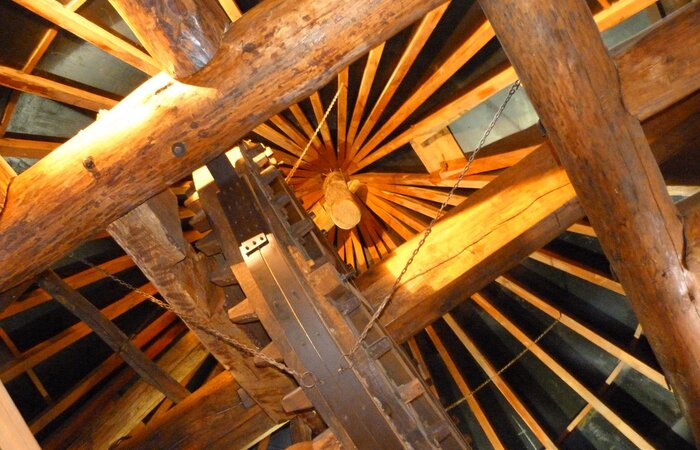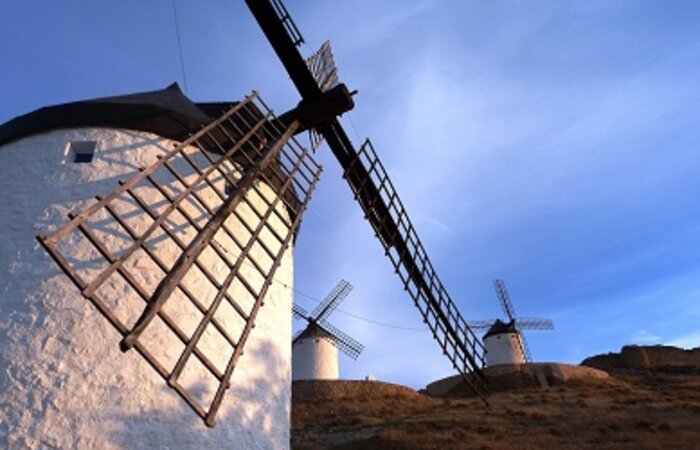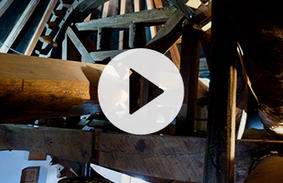Curiosities
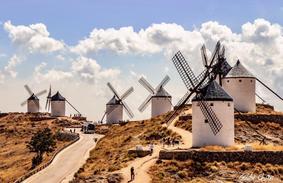
Among the mills that make up the set, one of them, the Sancho, is very special. It was the first one to be restored, following the methods and with the materials of the past. It still conserving pieces of great antiquity and due to the way of the restoration it was the first to be declared as BIC (an important heritage figure in Spain), later the whole set got the same patrimonial recognition.
MONUMENTS
Windmills
Symbol of Consuegra and La Mancha, the windmills crowns the hill Calderico drawing a unique painting. They are known worldwide, thanks to Don Quixote, it is impossible to stand in front of them without imagining the wanderings of the hidalgo, and visualize an inspired Cervantes who, expert of the area, wanted to capture them in his novel.
There are few images as amazing and graphic as contemplating one of the largest and best-preserved milling groups in Spain. Located on the top of the hill taking advantage of the wind that the elevations gives, these twelve giants have watched the life of Consuegra and its people from the top. Some of them with an antiquity dating back to the sixteenth century, they have been vital and essential for the development of the region. The lack of constant water flows (La Mancha may have an Arabic translation such as "dry land") prevented the construction of watermills. In addition, the large cereal production in the area, led to the installation of machines that could facilitate the processing of wheat or other cereals into flours and animal feed.
Although the principle of operation is relatively simple, the machinery and the structure that makes it possible are not. Years and years of use have perfected its mechanism to give it the look we can admire today; poplar blades, oak wheels and pine dome topped with metal roof make the heart of these great machines that have fed the people of Consuegra and its surroundings with the fruit of the land.
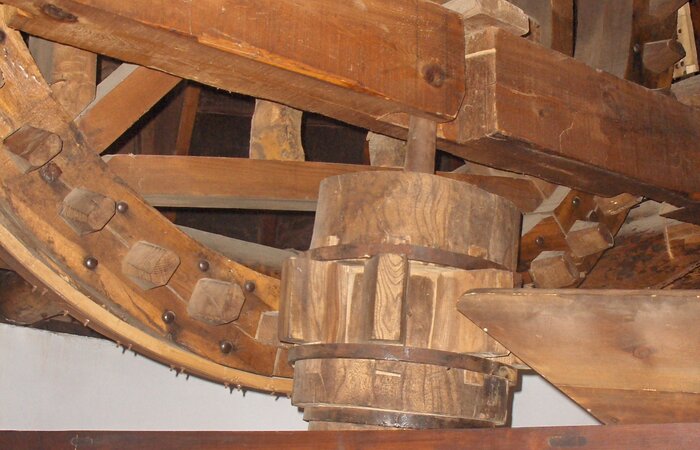
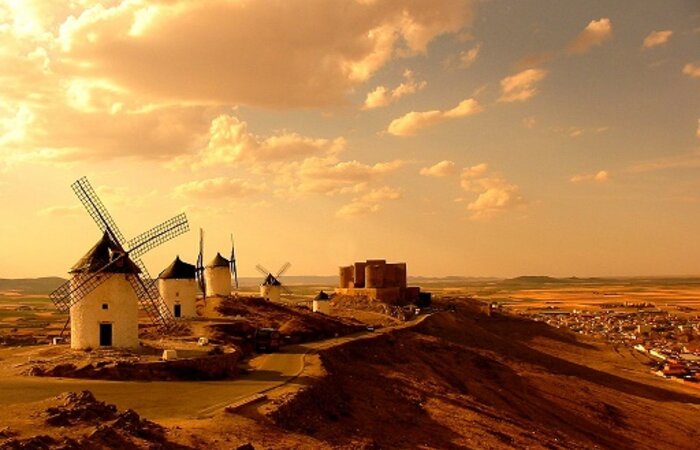
Thirteen mills were originally, twelve have been recovered, which are those that can be see today in the town. Each one with its own name, many are dedicated to several topics, others instead evoke chapters of Don Quixote. This history includes the commitment of a town with the recovery of their heritage. Now this heritage is not only local but a part of all who visit us daily.
